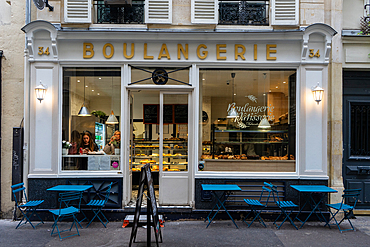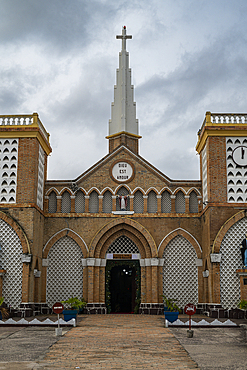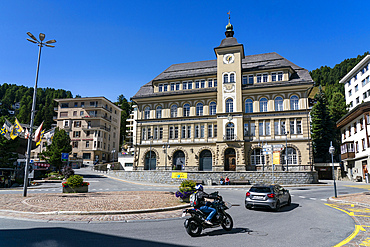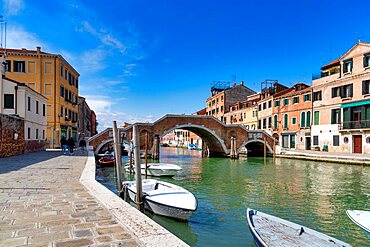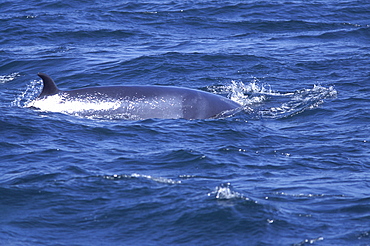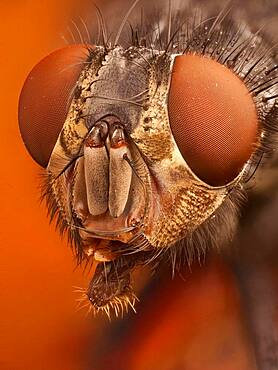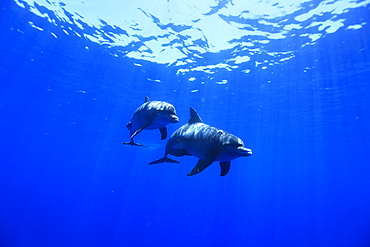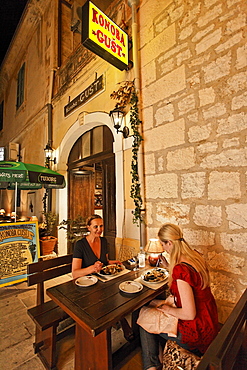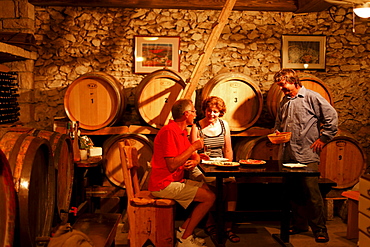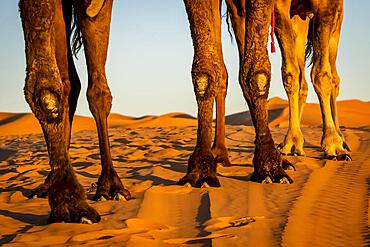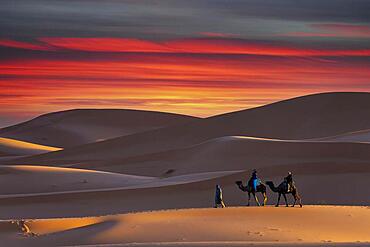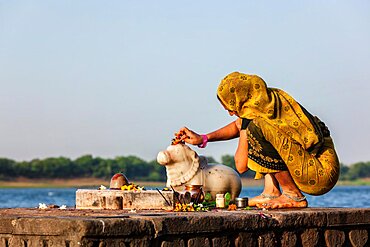Results
23 results found
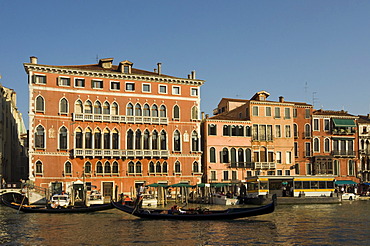
Gothic Palazzo Bembo, 15th century Palace in San Marco district near Rialto Bridge, Grand Canal, Venice, Veneto, Italy, Europe
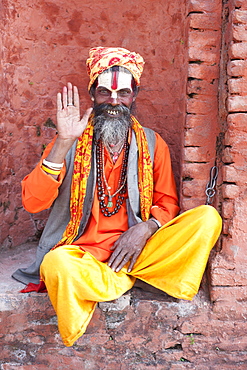
Sadhu (Holy Man) wearing brightly coloured clothing and characteristic facial painting at Pashupatinath Temple, Kathmandu, Nepal, Asia
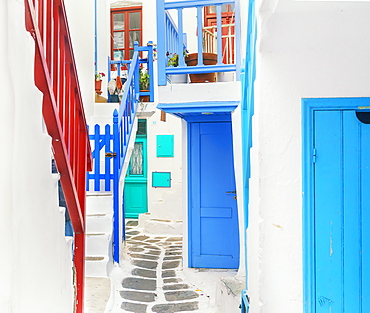
Characteristic colourful staircases, Mykonos Town, Mykonos, Cyclades Islands, Greek Islands, Greece, Europe

View of Vinales Valley at dawn from grounds of Hotel Los Jasmines showing limestone hills known as Mogotes characteristic of the region, near Vinales, Pinar Del Rio, Cuba, West Indies, Central America
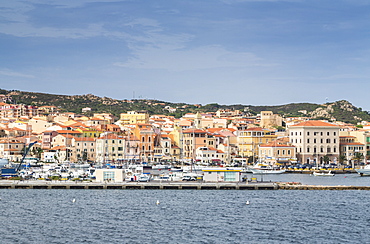
View of the characteristic harbour and blue sea of Caprera, La Maddalena Island, Sardinia, Italy, Mediterranean, Europe

View of Vinales Valley at dawn from grounds of Hotel Los Jasmines showing limestone hills known as Mogotes characteristic of the region, near Vinales, Pinar Del Rio, Cuba, West Indies, Central America
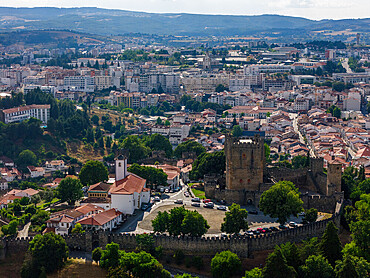
Bragança Castle, one of the most characteristic examples of medieval architecture, was built in 1409 on the orders of king João I on foundations dating back to the times of the first king of Portugal, Afonso Henriques
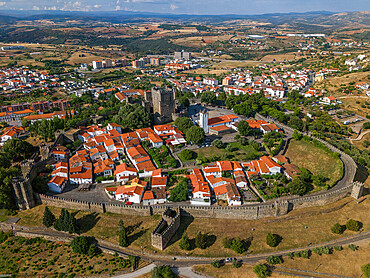
Bragança Castle, one of the most characteristic examples of medieval architecture, was built in 1409 on the orders of king João I on foundations dating back to the times of the first king of Portugal, Afonso Henriques
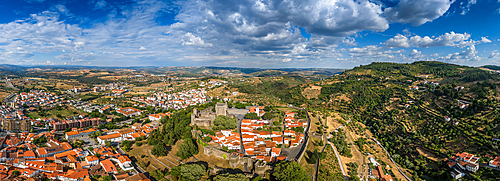
Aerial panoramic view of Bragança Castle, one of the most characteristic examples of medieval architecture, was built in 1409 on the orders of king João I on foundations dating back to the times of the first king of Portugal, Afonso Henriques
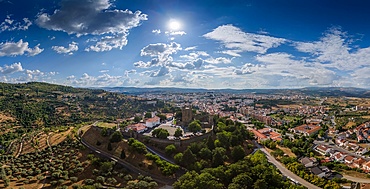
Aerial panoramic view of Bragança Castle, one of the most characteristic examples of medieval architecture, was built in 1409 on the orders of king João I on foundations dating back to the times of the first king of Portugal, Afonso Henriques
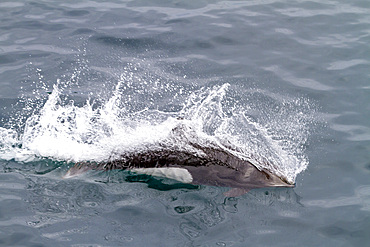
Adult Dall's porpoise (Phocoenoides dalli) surfacing with characteristic rooster tail splash in Johnstone Strait, British Columbia, Canada, North America
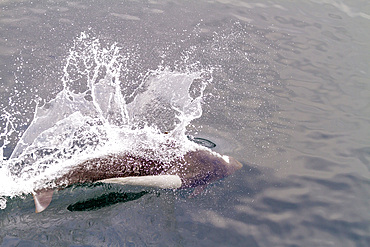
Adult Dall's porpoise (Phocoenoides dalli) surfacing with characteristic rooster tail splash in Johnstone Strait, British Columbia, Canada, North America
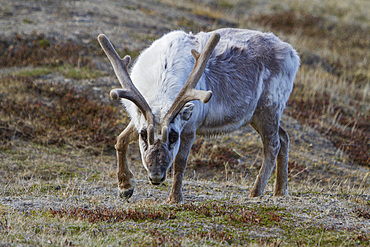
Adult Svalbard reindeer (Rangifer tarandus platyrhynchus) grazing within the town limits of Longyearbyen, Svalbard, Norway
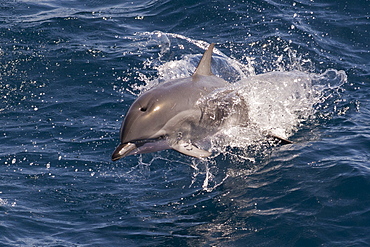
Clymene dolphin (Stenella clymene) porpoising towards the photographer, showing characteristic black beak markings, Senegal, West Africa, Africa
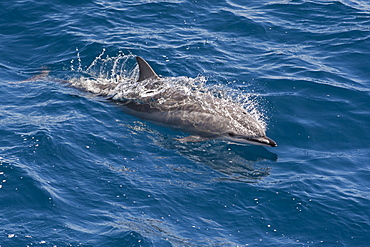
Clymene dolphin (Stenella clymene) breaking the surface, showing characteristic markings on face and flanks, Senegal, West Africa, Africa

Close up of registration plate of a Tuk Tuk, a taxi characteristic of South East Asia, Bangkok, Thailand, Southeast Asia, Asia
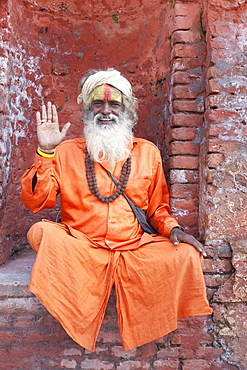
Sadhu (Holy Man) wearing brightly coloured clothing and characteristic facial painting at Pashupatinath Temple, Kathmandu, Nepal, Asia
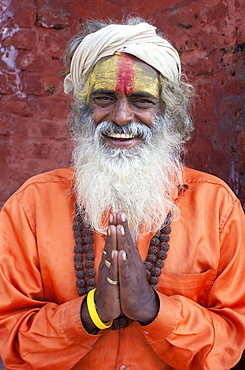
Sadhu (Holy Man) wearing brightly coloured clothing and characteristic facial painting at Pashupatinath Temple, Kathmandu, Nepal, Asia
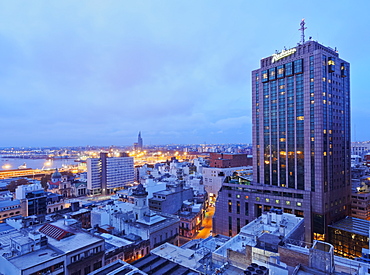
Elevated view of the City Centre with the characteristic building of the Radisson Hotel, Montevideo, Uruguay, South America
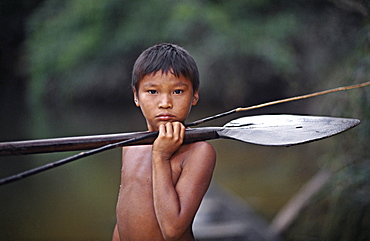
The idea of the interconnectedness of all things is central to the tribal way of looking at the world. practical knowledge of the environment, of crops and medicines, of hunting and fishing, is a byproduct of it. the makuna believe that human beings, animals, and all of nature are parts of the same one. animals and fish live in their own communities, which are just like human communities, with their chiefs, their shamans, their dance houses, their songs, and their material possessions. when human peoples dance in this world, the shaman invites the animal people to dance in theirs. if humans do not dance and shamans do not offer spirit food to the animal people, the animals will die out and there will be no more game left in the world. for the makuna the radical disjunction so characteristic of western thought between nature and culture, men and animals, dissolves. eastern colombia amazon, vaupes region, population: 600
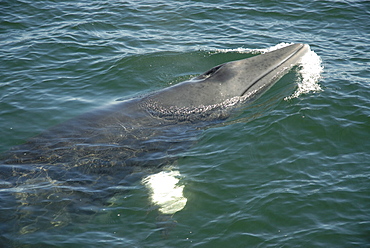
The white flipper band of a Minke whale (Balaenoptera acutorostrata) is visible through the greenish water. This distinctive feature is characteristic of Minke whales of the northern hemisphere and the most obvious difference to their relatives in the Antarctic. St. Lawrence estuary, Canada
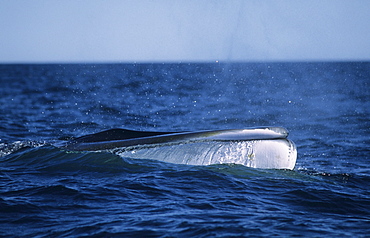
The white tip of a Finback whaleÌs (Balaenoptera physalus) snout showing a distinctive characteristic of this species; the lower right jaw is white in colour whereas the left side is dark. Gasp», Canada

Adult Dall's Porpoise (Phocoenoides dalli) surfacing with characteristic "rooster tail" splash in Icy Strait, Southeast Alaska, USA. Pacific Ocean.
(Restricted Resolution - pls contact us)
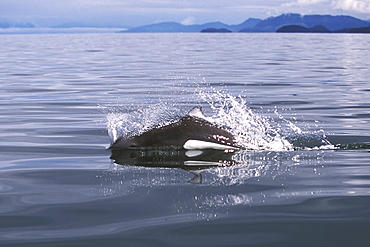
Adult Dall's Porpoise (Phocoenoides dalli) surfacing with characteristic "rooster tail" splash in Icy Strait, Southeast Alaska, USA. Pacific Ocean.
(Restricted Resolution - pls contact us)
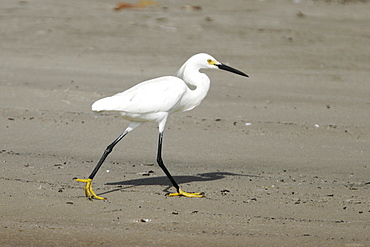
Adult Snowy Egret (Egretta thula) foraging at low tide on Isla Magdalena, Baja, Mexico. Note the characteristic golden feet and black legs, the field characteristics of this species.
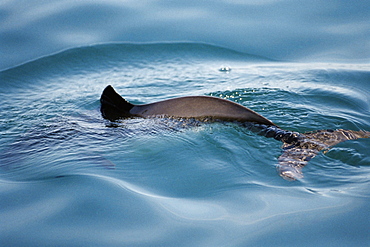
Harbour porpoise (Phocoena phocoena) with tail visible through the water and characteristic triangular dorsal fin just leaving the surface. Hebrides, Scotland
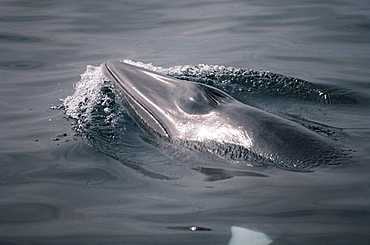
Minke whale (Balaenoptera acutorostrata) at the surface to breath with blow hole open. Characteristic white bands on the flipper visible thorugh the water. Hebrides, Scotland (1 of 2 images).
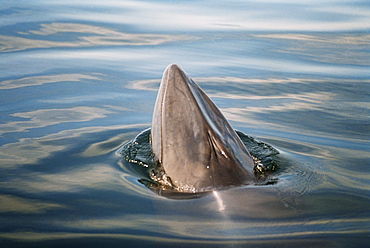
Minke whale (Balaenoptera acutorostrata) showing the characteristic single ridge down between the blow hole and rostrum. Hebrides, Scotland
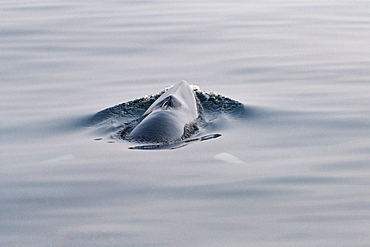
Minke whale (Balaenoptera acutorostrata) surfacing for air with characteristic white bands on its flippers visible through the water on each side . Hebrides, Scotland

Minke whale (Balaenoptera acutorostrata) surfacing towards the camera with characteristic white bands on each flipper visible through the water. Hebrides, Scotland
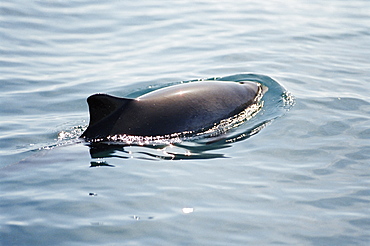
Harbour porpoise (Phocoena phocoena) showing characteristic pigmentation on its flanks and triangular dorsal fin. Hebrides, Scotland
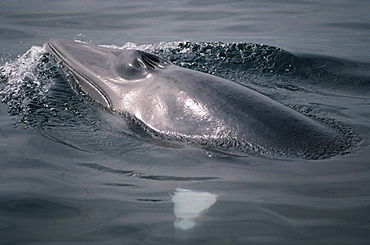
Minke whale (Balaenoptera acutorostrata) at the surface to breath with blow hole open. Characteristic white bands on the flipper visible thorugh the water. Hebrides, Scotlan
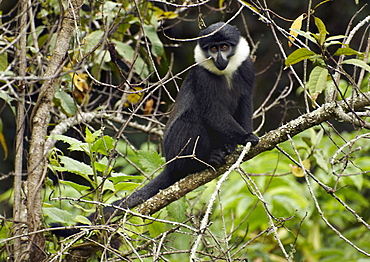
L'Hoest's Monkey (Cercopithecus lhoesti), or Mountain Monkey, is a guenon found in the upper eastern Congo basin. They mostly live in mountainous forest areas in small, female-dominated groups. They have a dark coat and can be distinguished by a characteristic white beard. Gikongoro, Rwanda, East Africa
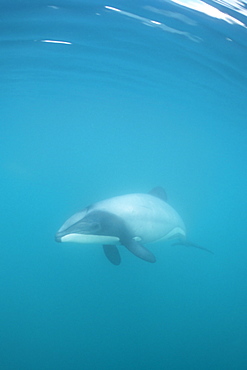
Hector's dolphin (Cephalorhynchus hectori) approaching camera, showing characteristic dorsal fin.
Akaroa, New Zealand.
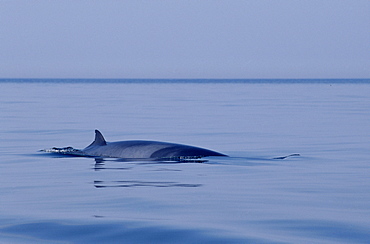
Minke whale (Balaenoptera acutorostrata) showing characteristic shevron pigmentation and dorsal fin set relatively far down the back. Hebrides, Scotland.

Blue whale (Balaenoptera muscularis) showing characteristic column of spray as it breaths. Aerial photograph. Husavik, Iceland (RR)

Risso's dolphin (Grampus griseus) with its eye and blow visible and characteristic scarring over its body and dorsal fin. Hebrides, Scotland.
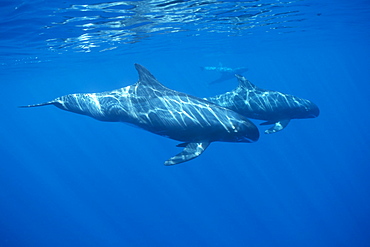
Pygmy killer whale (Feresa attenuata) travelling pod in dappled light, sowing characteristic long pectoral fins.
Hawaii.

Pygmy killer whale (Feresa attenuata) travelling pod in dappled light, sowing characteristic long pectoral fins.
Hawaii.
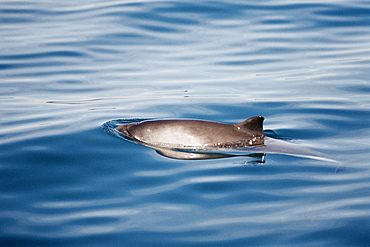
Harbour porpoise (Phocoena phocoena) showing characteristic pigmentation on its flanks and triangular dorsal fin. Hebrides, Scotland

Hawaiian spinner dolphin (Stenella longirostris lngirostris) showing characteristic dorsal fin and long snout. Hawaii, USA.

Hawaiian spinner dolphin (Stenella longirostris lngirostris) showing characteristic dorsal fin and long snout. Hawaii, USA.
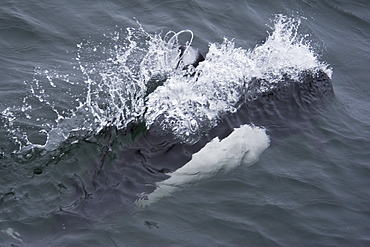
Dalls Porpoise (Phocoenoides dalli) adult surfacing at great speed. Monterey, California, Pacific Ocean. MORE INFO: Displaying characteristic spray of water known as a rooster tail.
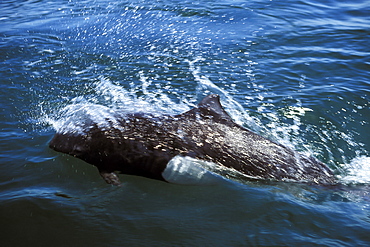
Adult Dall's Porpoise (Phocoenoides dalli) surfacing (note characteristic "rooster tail" splash from body) in the San Juan Islands, Washington State, USA.

Risso's dolphin (Grampus griseus) with its eye and blow visible and characteristic scarring over its body. Hebrides, Scotland.

The characteristic caudal "knuckles" of an adult California Gray Whale (Eschrichtius robustus) in San Ignacio Lagoon, Baja Peninsula, Baja California Sur, Mexico
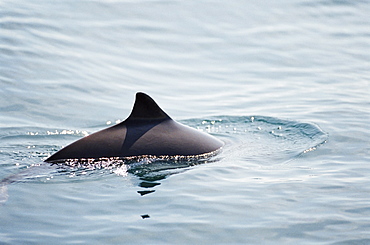
Harbour porpoise (Phocoena phocoena) showing characteristic triangular dorsal fin. Hebrides, Scotland
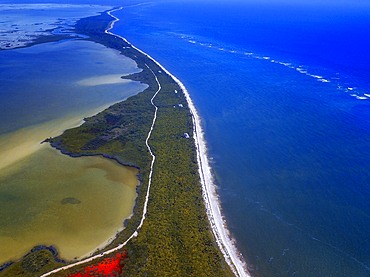
Aerial view of Punta Allen Sian Ka'an Reserve, Yucatan Peninsula, Mexico. Red lagoon near Boca Paila Bridge.
In the language of the Mayan peoples who once inhabited this region, Sian Ka'an means Origin of the Sky. Located on the east coast of the Yucatán peninsula, this biosphere reserve contains tropical forests, mangroves and marshes, as well as a large marine section intersected by a barrier reef. It provides a habitat for a remarkably rich flora and a fauna comprising more than 300 species of birds, as well as a large number of the region's characteristic terrestrial vertebrates, which cohabit in the diverse environment formed by its complex hydrological system.
Along its roughly 120 kilometres of coastline, the property covers over 400,000 hectares of land ranging from sea level to only ten m.a.s.l. The property boasts diverse tropical forests, palm savannah, one of the most pristine wetlands in the region, lagoons, extensive mangrove stands, as well as sandy beaches and dunes. The 120,000 hectares of marine area protect a valuable part of the Mesoamerican Barrier Reef and seagrass beds in the shallow bays. The lush green of the forests and the many shades of blue of the lagoons and the Caribbean Sea under a wide sky offer fascinating visual impressions.
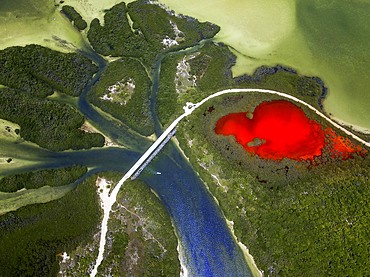
Aerial view of Punta Allen Sian Ka'an Reserve, Yucatan Peninsula, Mexico. Red lagoon near Boca Paila Bridge.
In the language of the Mayan peoples who once inhabited this region, Sian Ka'an means Origin of the Sky. Located on the east coast of the Yucatán peninsula, this biosphere reserve contains tropical forests, mangroves and marshes, as well as a large marine section intersected by a barrier reef. It provides a habitat for a remarkably rich flora and a fauna comprising more than 300 species of birds, as well as a large number of the region's characteristic terrestrial vertebrates, which cohabit in the diverse environment formed by its complex hydrological system.
Along its roughly 120 kilometres of coastline, the property covers over 400,000 hectares of land ranging from sea level to only ten m.a.s.l. The property boasts diverse tropical forests, palm savannah, one of the most pristine wetlands in the region, lagoons, extensive mangrove stands, as well as sandy beaches and dunes. The 120,000 hectares of marine area protect a valuable part of the Mesoamerican Barrier Reef and seagrass beds in the shallow bays. The lush green of the forests and the many shades of blue of the lagoons and the Caribbean Sea under a wide sky offer fascinating visual impressions.

Aerial view of Punta Allen Sian Ka'an Reserve, Yucatan Peninsula, Mexico. Red lagoon near Boca Paila Bridge.
In the language of the Mayan peoples who once inhabited this region, Sian Ka'an means Origin of the Sky. Located on the east coast of the Yucatán peninsula, this biosphere reserve contains tropical forests, mangroves and marshes, as well as a large marine section intersected by a barrier reef. It provides a habitat for a remarkably rich flora and a fauna comprising more than 300 species of birds, as well as a large number of the region's characteristic terrestrial vertebrates, which cohabit in the diverse environment formed by its complex hydrological system.
Along its roughly 120 kilometres of coastline, the property covers over 400,000 hectares of land ranging from sea level to only ten m.a.s.l. The property boasts diverse tropical forests, palm savannah, one of the most pristine wetlands in the region, lagoons, extensive mangrove stands, as well as sandy beaches and dunes. The 120,000 hectares of marine area protect a valuable part of the Mesoamerican Barrier Reef and seagrass beds in the shallow bays. The lush green of the forests and the many shades of blue of the lagoons and the Caribbean Sea under a wide sky offer fascinating visual impressions.
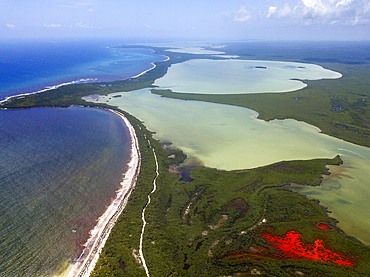
Aerial view of Punta Allen Sian Ka'an Reserve, Yucatan Peninsula, Mexico. Red lagoon near Boca Paila Bridge.
In the language of the Mayan peoples who once inhabited this region, Sian Ka'an means Origin of the Sky. Located on the east coast of the Yucatán peninsula, this biosphere reserve contains tropical forests, mangroves and marshes, as well as a large marine section intersected by a barrier reef. It provides a habitat for a remarkably rich flora and a fauna comprising more than 300 species of birds, as well as a large number of the region's characteristic terrestrial vertebrates, which cohabit in the diverse environment formed by its complex hydrological system.
Along its roughly 120 kilometres of coastline, the property covers over 400,000 hectares of land ranging from sea level to only ten m.a.s.l. The property boasts diverse tropical forests, palm savannah, one of the most pristine wetlands in the region, lagoons, extensive mangrove stands, as well as sandy beaches and dunes. The 120,000 hectares of marine area protect a valuable part of the Mesoamerican Barrier Reef and seagrass beds in the shallow bays. The lush green of the forests and the many shades of blue of the lagoons and the Caribbean Sea under a wide sky offer fascinating visual impressions.
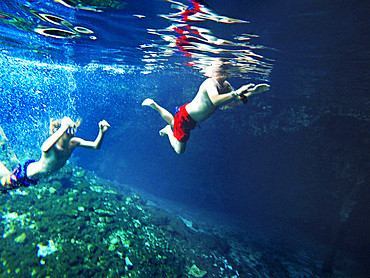
Gran Cenote de Tulum in Yucatan Peninsula, Quintana Roo, Mexico. There are thousands of cenotes dotted all over Mexico���s Yucatan Peninsula, and their existence is as much a defining characteristic of the region as is the distinct geological feature from which they result. Once revered by the ancient Mayans as sacred wells, they are now magnets for tourists, adventurers, and explorers alike.

Palms and old pier in Punta Allen Sian Ka'an Reserve, Yucatan Peninsula, Mexico.
In the language of the Mayan peoples who once inhabited this region, Sian Ka'an means Origin of the Sky. Located on the east coast of the Yucatán peninsula, this biosphere reserve contains tropical forests, mangroves and marshes, as well as a large marine section intersected by a barrier reef. It provides a habitat for a remarkably rich flora and a fauna comprising more than 300 species of birds, as well as a large number of the region's characteristic terrestrial vertebrates, which cohabit in the diverse environment formed by its complex hydrological system.
Along its roughly 120 kilometres of coastline, the property covers over 400,000 hectares of land ranging from sea level to only ten m.a.s.l. The property boasts diverse tropical forests, palm savannah, one of the most pristine wetlands in the region, lagoons, extensive mangrove stands, as well as sandy beaches and dunes. The 120,000 hectares of marine area protect a valuable part of the Mesoamerican Barrier Reef and seagrass beds in the shallow bays. The lush green of the forests and the many shades of blue of the lagoons and the Caribbean Sea under a wide sky offer fascinating visual impressions.
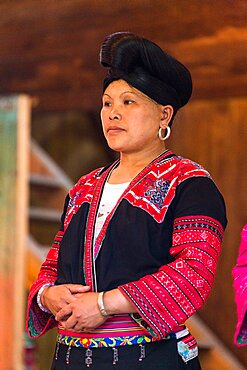
Portrait of a Red Yao ethnic minority woman showing her characteristic traditional attire, Huangluo, China.
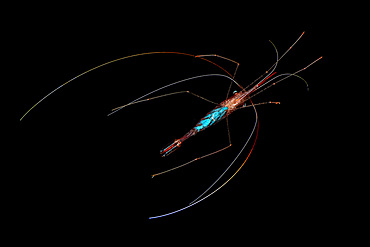
The graphic and essential shape of a Parapandal shrimp (Plesionika narval) in an unusual shot from above which also highlights the eggs, with their characteristic blue color.
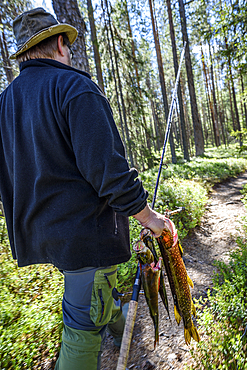
At the Rupkivi characteristic rock in the Savinajoki river, anglers on the Bear Circle hiking trail, Finland

At the Rupkivi characteristic rock in the Savinajoki river, anglers on the Bear Circle hiking trail, Finland

At the Rupkivi characteristic rock in the Savinajoki river, anglers on the Bear Circle hiking trail, Finland

Silhouette of three camels and their handler against the rising sun in the Saharan Desert in Morocco

Silhouette of three camels and their handler against the rising sun in the Saharan Desert in Morocco
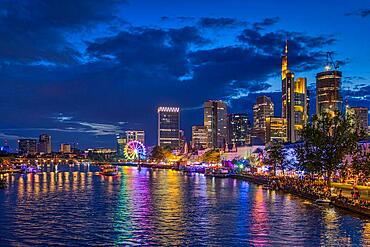
Numerous spectators wait on the banks of the Main for the fireworks to begin at the end of the Mainfest., Altebruecke, Frankfurt am Main, Hesse, Germany, Europe

Korean woman and Korean man with a crab, Gwangjang market, traditional street market in Jongno-gu, Seoul, South Korea, Asia

Mandu stall at the Gwangjang market, traditional street market in Jongno-gu, Seoul, South Korea, Asia

Shadows of a group of travelers are seen in the sand as they walk through the Saharan Desert in Morocco

Silhouette of three camels and their handler against the rising sun in the Saharan Desert in Morocco
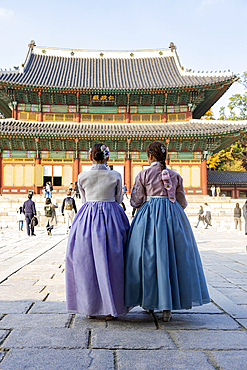
Young woman in traditional hanbok in front of the audience hall Injeongjeon Hall, with tourists, Changdeokgung Palace, Jongno-gu, Seoul
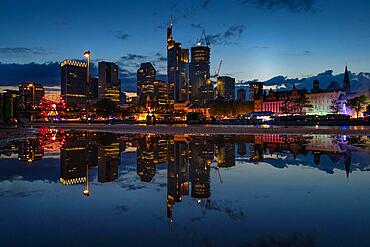
The colourful lights of the Mainfest are reflected in a puddle. The Mainfest on the Mainkai, Fahrtor and Roemerberg is one of Frankfurt's oldest public festivals. The official opening takes place in 2023 on 04 August at 6pm at the Gerechtigkeitsbrunnen on Roemerberg. The festival ends with a big fireworks display over the Main on Monday, 07.08.2023., Mainufer, Frankfurt am Main, Hesse, Germany, Europe

Top angle view of a palo santo or a holy sacred tree stick, burning with aroma smoke held by woman's hands over nature background

Swabian cuisine, pancakes, pancake layers with spinach mixture, springform pan, cake tin, preparing spinach cake spoon style, Swabian speciality, men's hands, Germany, Europe
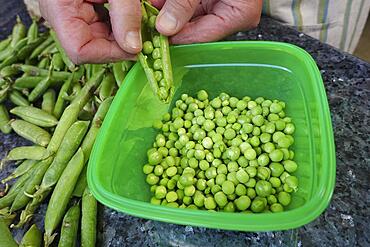
Southern German cuisine, baking, preparing hearty vegetable cake with walnut base, removing green peas from pods, green plastic bowl, men's hands, Germany, Europe

Swabian cuisine, pancake, pancake in the form layer with spinach mixture, springform, cake form, ladle, preparation spinach cake in the manner of the spoon, Swabian speciality, man's hand, Germany, Europe
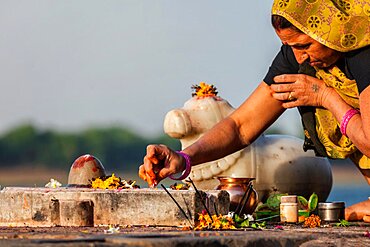
MAHESHWAR, INDIA, APRIL 26: Indian woman performs morning pooja on sacred river Narmada ghats on April 26, 2011 in Maheshwar, Madhya Pradesh, India. To Hindus Narmada is one of 5 holy rivers of India

Famous greek iconic selfie spot tourist destination Oia village with traditional white houses and windmills in Santorini island on sunset in twilight, Greece, Europe

